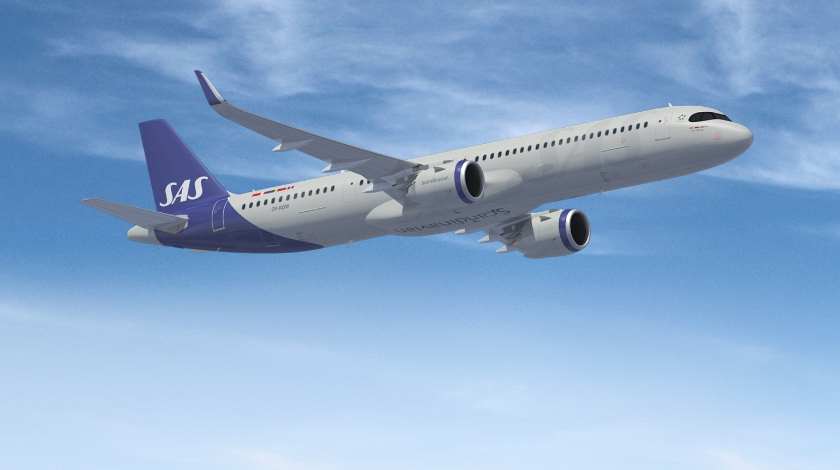Photo: SAS
Reading Time: 2 minutesThe first of three new A321LRs, a narrow-bodied aircraft suited for longer distances, will enter service in the SAS fleet on September 18, 2020.
The new aircraft is equipped with a service concept with three travel classes, like the rest of SAS’ long-haul fleet, and will increase SAS’ flexibility to meet Scandinavian travel patterns. The new aircraft, part of SAS’ ongoing fleet renewal will reduce climate-impacting emissions in comparison to previous generations of similar aircraft.
The Airbus A321LR is a narrow-body, single aisle aircraft, specially configured to fly longer distances than a standard A321neo. The smaller aircraft gives SAS the opportunity to fill the aircraft on new routes and will be a welcome addition to the SAS long haul fleet. The A321LR will increase the SAS’ flexibility to adjust to changes in the demand for new routes and destinations.
“Reducing the carbon footprint in the airline industry is crucial and SAS aims to lead the way toward sustainable travel. We have set a target of reducing carbon dioxide emissions by 25 percent by 2030. The ongoing fleet renewal, including new long-haul aircraft, is an investment toward more sustainable aviation,” continues Sandlund.
The aircraft has 22 Business, 12 Plus and 123 Go, meaning a total of 157 seats in a single aisle aircraft. The seats are especially chosen for the A321LR to optimize the comfort in all three travel classes to meet the expectations of frequent travelers.
Seats in SAS Business are fully flat seat beds and there are different mood light scenarios in the cabins, as well as Hi-speed Wi-Fi. Every seat is equipped with IFE screens, PC-power and/or Hi-power USB. The reduced noise level inside the cabin will further enhance the travel experience onboard.
The first A321LR will enter service on September 18, 2020. The first route the A321LR will operate on be Copenhagen-Boston. This means that the route will become a year-round destination served on a high frequency basis and will further strengthen SAS’ offering to the North Americas

